Is The Puzzling Miami Circle Much Older Than Previously Thought?
Ellen Lloyd - AncientPages.com - The ancient Miami Circle is a fascinating archaeological site in Florida that offers important knowledge about American history. While investigating the site, scientists discovered certain anomalous artifacts that shouldn’t be there. Who were the true creators of the Miami Circle? Why have some researchers questioned the site’s age and authenticity?
The Miami Circle was accidentally discovered in 1998 when property developer Michael Baumann who owned the land, tore down an apartment complex. Before proceeding with the building of his luxury apartments, he was obliged to conduct a routine archaeological field survey of the site.
The Miami Circle, as seen from above. Credit:EduardoValle CC BY-SA 3.0 - Culture Trip
To his surprise, he found a circular pattern of holes in the limestone bedrock. Archaeologists examined the site, and radio-carbon testing revealed the site was much older than scholars expected.
When John Ricisak, a specialist in the County Historic Preservation department, did a radiocarbon dating, it turned out the wood was between 1,800–2,000 years old, but does this imply the circle is just as old? This is a question scientists cannot agree upon. Some scholars maintain that the circle is younger than the wood, and some suggest that the entire Miami Circle is at least 3,000-year-old, or even much older!
What is certain is that the Miami Circle is the only known evidence of a prehistoric permanent structure cut into the bedrock in the Eastern United States.
Was The Miami Circle Created By The Olmec or Mayan Civilizations?
It is generally assumed the Miami Circle was created by the Tequesta Indians, a group of Southern Florida native Americans who inhabited the area from about 2,000 years ago to after the Spanish arrived. The lost tribe of the Tequesta Indians never became powerful and numbered only 800. When Spanish Florida was traded to the British, the Tequesta Indians started to die out due to settlement battles, slavery, and disease. All we have left of this lost Native American tribe are the artifacts they left on the site where they lived.
While examining the site, archaeologists found tools associated with the Tequesta Indians. Among these objects were shell tools, shark teeth, and other items of aquatic origin.
However, other discoveries contradict the theory the Miami Circle was built by this long-gone Native American tribe.
Some of the artifacts recovered from the Miami Circle's holes such as, for example, two completely untouched basalt axe heads, were definitely not used by the Tequesta Indians. Studies revealed the basalt was from the region of Macon, Georgia, some 600 miles (970 km) away. Beneath the Miami Circle, archaeologists also found animal remains of a dolphin, sea turtle, and a 5-foot (1.5 m) long shark skeleton.
This suggests this had once been a ritual site used for ceremonial purposes. There is also a small group of scientists who say “that the structure's puzzling ring-shaped array of 30 rectangular "basins" are more analogous to England's "Stonehenge" - once serving as the "foundation slots" for a ring of 30 upright stones, which once stood in the currently surviving geometric bedrock basins -"an archeo-astronomical "stonehenge-like device," for observing the solstices and equinoxes, as well as other astronomically-based ceremonial uses ..." 1
In an attempt to identify the original builders of the Miami Circle some scientists started to speculate suggesting the site was created by the Olmec or Mayan civilization. It was claimed the site is much older than previously thought and a legacy of a “sophisticated people who lived here long before the Tequestas were in the area, perhaps as much as 10,000 to 13,000 years ago.” 1
“Of all the lost civilizations of Mesoamerica, that of the Olmec is the oldest and the most mystifying. We know very little about the Olmec - a mysterious culture considered by many as the Mother Civilization of Mesoamerica that laid the foundation for the Mesoamerican cultural traditions.
They arose suddenly and with no apparent prior gradual development. It is difficult to precisely locate the Olmec civilization in time.” 2
Who the Olmecs were and where they came from is still a mystery, but it’s unlikely they were the builders of the ancient Miami Circle.
Scientists investigating the Maimi Circle. Credit: Trail of Florida's Indian Heritage
Without solid evidence, it’s difficult to link the Miami Circle to the Olmec or Mayan civilization. No artifacts of Central American origin have been found at the site.
It’s, of course, possible the Miami Circle is much older than originally presumed, and the site may already have existed when the Tequesta Indians reached the area.
What can be said with certainty is that the Miami Circle is of unique historical, cultural, and scientific importance. Its existence offers a far-more ancient and far more interesting history than anyone dared imagine. North America has a rich ancient history and several prehistorical mysteries.
Updated on July 20, 2024
Written by Ellen Lloyd – AncientPages.com
Copyright © AncientPages.com All rights reserved. This material may not be published, broadcast, rewritten or redistributed in whole or part without the express written permission of AncientPages.com
Expand for referencesMore From Ancient Pages
-
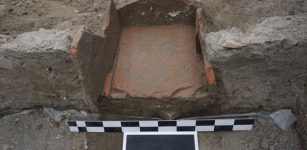 Ancient ‘Refrigerator’ And Unique Coins Discovered In Roman Military Camp In Bulgaria
Archaeology | Oct 3, 2022
Ancient ‘Refrigerator’ And Unique Coins Discovered In Roman Military Camp In Bulgaria
Archaeology | Oct 3, 2022 -
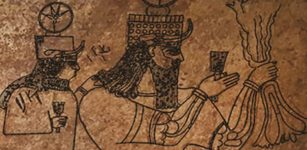 Unexpected Discovery Of Secret Underground Chamber Reveals Mysterious Neo-Assyrian Rock Panel
Archaeology | May 13, 2022
Unexpected Discovery Of Secret Underground Chamber Reveals Mysterious Neo-Assyrian Rock Panel
Archaeology | May 13, 2022 -
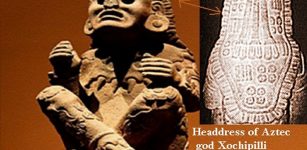 Xochipilli: Aztec God Of Love, Music, Song And Ecstatic Mushroom Trance
Aztec Mythology | May 19, 2018
Xochipilli: Aztec God Of Love, Music, Song And Ecstatic Mushroom Trance
Aztec Mythology | May 19, 2018 -
 Mythical Kingdom Of Prester John – Did It Exist?
Featured Stories | Mar 21, 2016
Mythical Kingdom Of Prester John – Did It Exist?
Featured Stories | Mar 21, 2016 -
 Will Egypt be able to buy back the 4500-year-old statue of Sekhemka?
Artifacts | Aug 26, 2015
Will Egypt be able to buy back the 4500-year-old statue of Sekhemka?
Artifacts | Aug 26, 2015 -
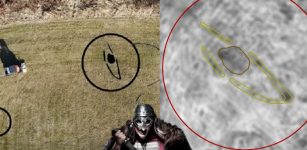 New Huge Viking Ship Discovered By Radar In Øye, Norway – What Is Hidden Beneath The Ground?
Archaeology | Apr 9, 2022
New Huge Viking Ship Discovered By Radar In Øye, Norway – What Is Hidden Beneath The Ground?
Archaeology | Apr 9, 2022 -
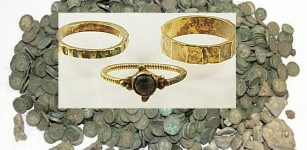 900-Year-Old Coins And Jewelry Unearthed In Polish Village – Could They Belong To A Ruthenian Princess?
Artifacts | Jan 12, 2021
900-Year-Old Coins And Jewelry Unearthed In Polish Village – Could They Belong To A Ruthenian Princess?
Artifacts | Jan 12, 2021 -
 Evidence Of Early Human Habitats Linked To Past Climate Shifts Discovered By Scientists
Archaeology | Apr 13, 2022
Evidence Of Early Human Habitats Linked To Past Climate Shifts Discovered By Scientists
Archaeology | Apr 13, 2022 -
 Who Is Buried In The Extremely Well-Preserved 2,600-Year-Old Celtic Chamber Tomb Found Near Riedlingen, Germany?
Archaeology | Oct 24, 2024
Who Is Buried In The Extremely Well-Preserved 2,600-Year-Old Celtic Chamber Tomb Found Near Riedlingen, Germany?
Archaeology | Oct 24, 2024 -
 Why Winter Solstice Matters Around The World
Archaeoastronomy | Dec 20, 2022
Why Winter Solstice Matters Around The World
Archaeoastronomy | Dec 20, 2022 -
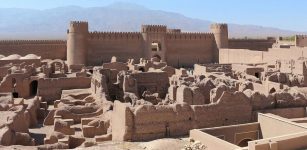 Graves Dated To Achaemenid Or Parthian Empire – Found In Iran
Archaeology | Aug 15, 2018
Graves Dated To Achaemenid Or Parthian Empire – Found In Iran
Archaeology | Aug 15, 2018 -
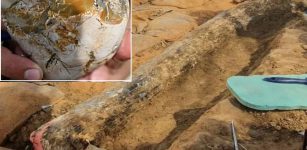 A Half-A Million-Year-Old Well-Preserved Elephant Tusk Unearthed In Israel
Archaeology | Sep 2, 2022
A Half-A Million-Year-Old Well-Preserved Elephant Tusk Unearthed In Israel
Archaeology | Sep 2, 2022 -
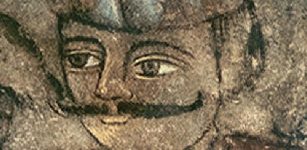 On This Day In History: Vlad II Known As Vlad Dracul (‘Vlad The Dragon’) Was Born – On August 30, 1400
News | Aug 30, 2016
On This Day In History: Vlad II Known As Vlad Dracul (‘Vlad The Dragon’) Was Born – On August 30, 1400
News | Aug 30, 2016 -
 Secret Hidden Freemasonic Messages Concealed In Ancient Egyptian Artifacts And Roman Works – A Misunderstood Object? – Part 1
Ancient Mysteries | Feb 18, 2022
Secret Hidden Freemasonic Messages Concealed In Ancient Egyptian Artifacts And Roman Works – A Misunderstood Object? – Part 1
Ancient Mysteries | Feb 18, 2022 -
 Satellite Images Reveal A Mysterious Ancient Site On A Remote Island Is Much Larger Than Previously Thought, Prompting New Questions
Archaeology | Nov 28, 2024
Satellite Images Reveal A Mysterious Ancient Site On A Remote Island Is Much Larger Than Previously Thought, Prompting New Questions
Archaeology | Nov 28, 2024 -
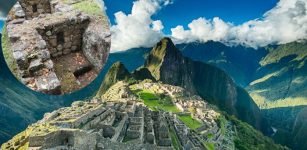 Unknown Ancient Structures Discovered At Machu Picchu By LIDAR
Archaeology | Mar 29, 2022
Unknown Ancient Structures Discovered At Machu Picchu By LIDAR
Archaeology | Mar 29, 2022 -
 Mystery Of The Cave Where People Vanish Or Become Disoriented
Featured Stories | Jan 2, 2024
Mystery Of The Cave Where People Vanish Or Become Disoriented
Featured Stories | Jan 2, 2024 -
 Draugr – Vikings Feared This Ugly Living Dead With Prophetic Visions
Featured Stories | May 24, 2020
Draugr – Vikings Feared This Ugly Living Dead With Prophetic Visions
Featured Stories | May 24, 2020 -
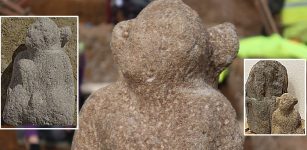 Roman-Germanic Mythical Kneeling Figure With A Human Head And Snake’s Body Unearthed At Stuttgart’s Excavation Site
Artifacts | Apr 24, 2024
Roman-Germanic Mythical Kneeling Figure With A Human Head And Snake’s Body Unearthed At Stuttgart’s Excavation Site
Artifacts | Apr 24, 2024 -
 Curtana – Sword Of Mercy Once Belonged To The Anglo-Saxon King Edward The Confessor And Perhaps Even The Arthurian Hero Tristan
Artifacts | Jul 16, 2017
Curtana – Sword Of Mercy Once Belonged To The Anglo-Saxon King Edward The Confessor And Perhaps Even The Arthurian Hero Tristan
Artifacts | Jul 16, 2017


